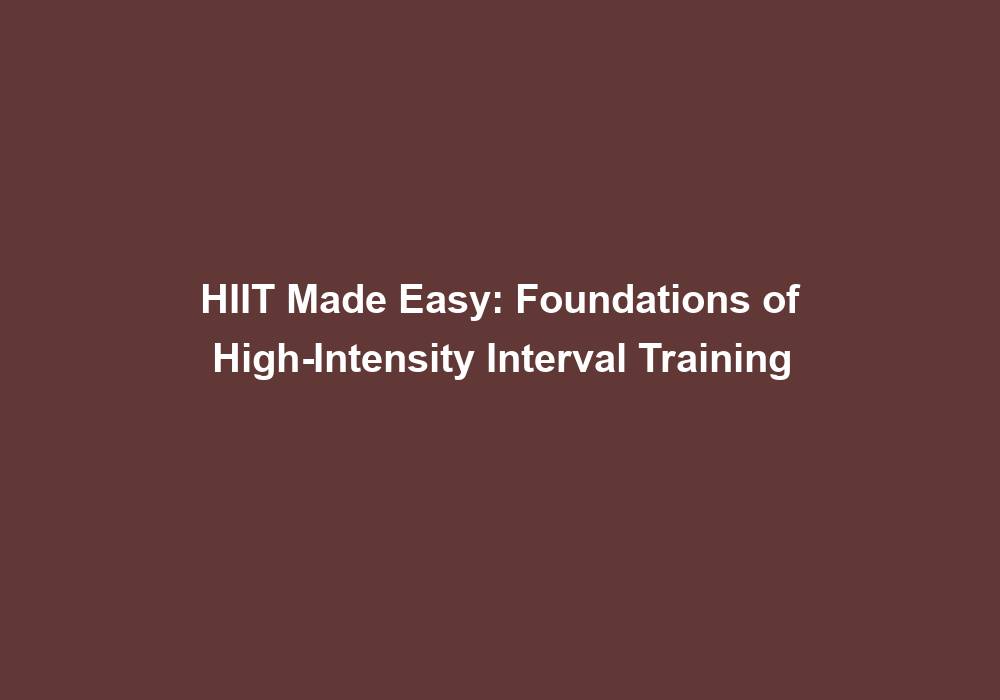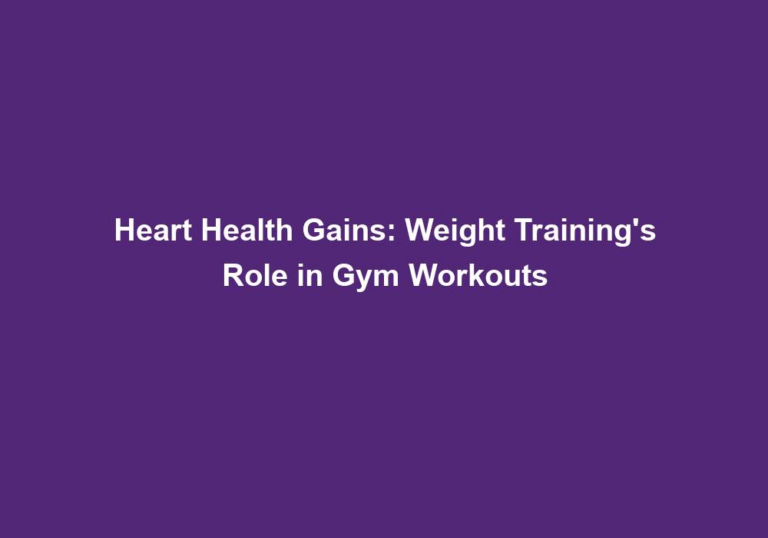HIIT Made Easy: Foundations of High-Intensity Interval Training
High-Intensity Interval Training (HIIT) has gained significant popularity in the fitness world due to its effectiveness in improving cardiovascular fitness, burning calories, and maximizing workout efficiency. This training method involves alternating between intense bursts of exercise and short recovery periods. In this article, we will delve into the foundations of HIIT, exploring its benefits, key principles, and how to incorporate it into your fitness routine.
Understanding the Benefits of HIIT
-
Efficient Time Management: One of the primary advantages of HIIT is its time efficiency. With busy schedules becoming the norm, HIIT allows individuals to get an effective workout in a shorter amount of time compared to traditional steady-state cardio exercises. By incorporating high-intensity intervals, you can maximize your calorie burn and cardiovascular fitness in just a fraction of the time.
-
Increased Caloric Burn: HIIT workouts are known to boost the calorie-burning process long after the workout ends. This occurs due to the increased metabolic rate and the afterburn effect, also known as excess post-exercise oxygen consumption (EPOC). During intense intervals, your body’s demand for oxygen increases, which leads to an oxygen debt. This debt needs to be repaid during the recovery periods, resulting in an elevated calorie burn even after the workout.
-
Enhanced Cardiovascular Fitness: HIIT improves cardiovascular endurance by challenging your heart to pump blood at a higher rate during intense intervals. This ultimately strengthens the heart and improves overall cardiovascular health. By regularly engaging in HIIT, you can increase your aerobic capacity, allowing you to perform better in various physical activities and reduce the risk of cardiovascular diseases.
-
Preservation of Lean Muscle: Unlike traditional steady-state cardio, HIIT workouts help preserve lean muscle mass while burning fat. This is crucial for individuals looking to achieve a toned physique. The combination of intense bursts of exercise and short recovery periods stimulates muscle growth and prevents muscle breakdown. This results in a leaner and more defined physique.
-
Adaptability: HIIT can be tailored to various fitness levels and goals, making it suitable for both beginners and advanced athletes. It allows for modifications in intensity, duration, and exercise selection. Whether you’re a beginner looking to improve your fitness level or an advanced athlete aiming to enhance your performance, HIIT can be customized to meet your specific needs.
Key Principles of HIIT
To effectively implement HIIT into your fitness routine, it is essential to understand and follow these key principles:
1. Intensity
The cornerstone of HIIT lies in its high-intensity intervals. During these intervals, you should aim to push your limits and work at a near-maximum effort level. This intensity can be measured using heart rate, perceived exertion, or a combination of both. However, it is crucial to ensure that the intensity chosen aligns with your fitness level and capabilities to avoid injury. Gradually increase the intensity over time as your fitness improves.
2. Work and Recovery Periods
HIIT sessions consist of alternating periods of intense exercise and active recovery. The work periods typically range from 20 seconds to 90 seconds, depending on your fitness level and goals. The recovery periods, on the other hand, are shorter and allow for partial recovery before the next intense interval. The ratio of work to rest can be adjusted based on your fitness level and desired level of challenge.
3. Exercise Selection
HIIT provides flexibility in exercise selection, allowing you to choose activities that align with your preferences and goals. Common exercises used in HIIT include sprinting, cycling, burpees, jumping jacks, and kettlebell swings. It is essential to select exercises that engage multiple muscle groups and can be performed with proper form and technique. This ensures a full-body workout and helps prevent muscle imbalances.
4. Progressive Overload
To continue challenging your body and making progress, it is crucial to incorporate the principle of progressive overload into your HIIT routine. This involves gradually increasing the intensity, duration, or number of intervals over time. By doing so, you ensure continued improvement and prevent fitness plateaus. However, it is important to listen to your body and avoid overtraining. Gradually progress while allowing for adequate recovery.
Incorporating HIIT into Your Fitness Routine
Now that we have outlined the foundations of HIIT, let’s explore how you can incorporate this training method into your fitness routine:
-
Warm-up: Begin each HIIT session with a dynamic warm-up to prepare your body for the intense exercise ahead. This can include light jogging, dynamic stretches, and mobility exercises. A proper warm-up increases blood flow to the muscles, enhances joint mobility, and reduces the risk of injuries.
-
Choose Your Intervals: Select the work and recovery periods based on your fitness level. Beginners may start with shorter work periods and longer recovery periods, gradually progressing as their fitness improves. Aim to challenge yourself while maintaining proper form and technique.
-
Exercise Selection: Choose exercises that target different muscle groups and provide a balanced full-body workout. This ensures overall strength and prevents muscle imbalances. Incorporate a variety of exercises to keep your workouts engaging and prevent boredom.
-
Create a Routine: Develop a structured routine by deciding the number of intervals, work-to-rest ratio, and total workout duration. This allows for consistency and progress tracking. Write down your HIIT plan and set specific goals to keep yourself motivated and accountable.
-
Monitor and Adjust: Pay attention to your body’s response to HIIT. If you experience excessive fatigue or joint discomfort, consider modifying the intensity or duration. It’s important to listen to your body and avoid overtraining. Gradually increase the intensity and duration as your fitness level improves, but always prioritize safety.
-
Recovery and Rest: Allow sufficient time for recovery between HIIT sessions. This allows your body to repair and adapt, preventing overuse injuries and promoting long-term progress. Incorporate rest days into your fitness routine and prioritize sleep, hydration, and proper nutrition to support optimal recovery.
Conclusion
High-Intensity Interval Training (HIIT) is an efficient and effective training method that offers numerous benefits, including time efficiency, increased calorie burn, improved cardiovascular fitness, and muscle preservation. By understanding the key principles and incorporating HIIT into your fitness routine, you can optimize your workouts and achieve your fitness goals. Remember to always prioritize safety, listen to your body, and consult a healthcare professional before starting any new fitness regimen. Get ready to take your fitness to new heights with HIIT!







